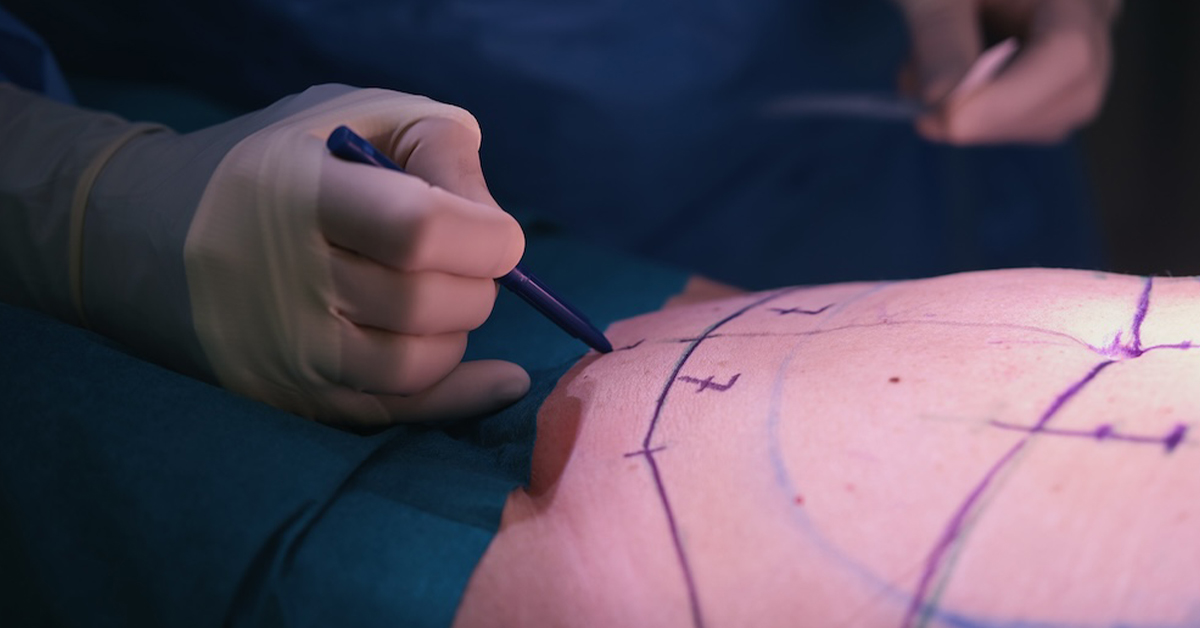Understanding the Tummy Tuck Scar Healing Stages
A Tummy Tuck, also known as Abdominoplasty, is a popular cosmetic surgery procedure that can help to tighten and tone the abdominal area. While a Tummy Tuck can produce impressive results, it is important to understand that the procedure also involves some level of scarring. The healing process and appearance of Abdominoplasty scars can vary greatly from person to person.
Understanding the Tummy Tuck scar healing stages is essential for managing expectations, promoting optimal healing, and reducing the risk of complications.
Tummy Tuck Scar Healing Stages
The healing process of a Tummy Tuck scar can be divided into three stages: closure, establishment, and maturity.
- Closure stage:
The closure stage is the initial healing process, which typically lasts for about 3 to 6 weeks after surgery. During this stage, the incision site will be closed with sutures or staples, and the wound will begin to heal.
- Establishment stage:
The establishment stage is the next phase of healing, which typically lasts for about 3 to 6 months after surgery. During this stage, the incision site will continue to heal and the scar will start to mature.
- Final stage
The final stage of healing, maturity, can last for up to one year after surgery, or even more. During this stage, the scar will continue to mature and will become less noticeable.
The First 3 to 6 Months: Tummy Tuck Scar Formation and Collagen Production
The first 3 to 6 months is the stage of collagen production, the body will produce new collagen fibers to repair the damaged tissue. Collagen production occurs in response to the injury and it helps to rebuild and strengthen the tissue, helping to improve the appearance of the scar. During this stage, it is important to protect the scar from sun exposure, avoid strenuous activities and follow the post-surgery instructions given by the surgeon to promote optimal healing.
One Year Post-Tummy Tuck: Tummy Tuck Scar Maturity and Final Healing Stages
The final stage of Tummy Tuck scar healing typically occurs around one year post-surgery, when the scar reaches maturity and reaches its final appearance. By this time, the incision site will have healed and the scar will have flattened and lightened in color. However, it’s important to note that the healing process can vary depending on the individual patient, as well as the type of tummy tuck performed.
During the maturity stage, the scar will continue to become less noticeable and will be softer and less raised. The scar will be less red and the surrounding skin will have regained its normal color. The scar may also have become less sensitive and less itchy. At this stage, the scar will have reached its final appearance, but it may not be fully invisible.
It’s also important to keep in mind that the healing process doesn’t end at one year post-surgery. It’s important to continue to take care of the scar to prevent any issues, this includes using sunscreen and avoiding excessive sun exposure, avoiding picking or scratching the scar, and keeping the scar moisturized.
Types of Tummy Tuck Scars: Belly Button, Lower Abdomen, Pelvic Area
There are three main types of Tummy Tuck scars: belly button, lower abdomen, and pelvic area.
- Belly button scar
The belly button area is a common location for scarring during a traditional tummy tuck procedure. This is because the belly button is attached to the abdominal wall during the surgery and thus the scar will form a circle around the belly button. However, the visibility of the scar can vary depending on the extent of skin and tissue removal, and the technique used by the surgeon. In some cases, the skin may be pulled or tucked enough that the scarring is less noticeable.
- Lower abdomen scar
A lower abdomen scar is a horizontal scar that runs along the lower abdomen, just above the pubic area. Depending on the type of tummy tuck and the individual patient’s needs, the incision can be shorter or longer, and may extend from hip to hip.
This type of scar is produced when the skin and fat are removed from the lower abdomen. The scar is usually well-hidden by clothing and swimwear, making it less noticeable.
- Pelvic area scar
A pelvic area scar is a horizontal scar that runs along the lower abdomen, just above the pubic area. This type of scar is produced when the skin and fat are removed from the pelvic area, it’s less common than the other types of scars. The scar is usually well-hidden by clothing and swimwear, making it less noticeable.
What Will My Tummy Tuck Scars Look Like?
It’s important to understand that all surgical procedures leave behind some degree of scarring, and a Tummy Tuck is no exception.
The scarring process is different for each individual, but plastic surgeons have different techniques to minimize scarring. For example, the use of surgical tape, silicone sheeting, and laser therapy are some of the most common options.
The scarring process takes time, and the final results may not be visible until several months after the surgery. Patients should also be aware that there is no guarantee that the scars will be completely invisible, but the goal is to make them as minimal and inconspicuous as possible.
Tummy Tuck scars can be visible, but the postoperative care and follow-up instructions given by the surgeon play a crucial role in reducing the visibility of the scars.
Personal Factors that Affect Tummy Tuck Wound Healing
Smoking is one of the most significant personal factors that can affect wound healing. Nicotine in cigarettes constricts blood vessels, reducing the blood flow to the surgical area and slowing the healing process. If you are a smoker, it’s important to quit smoking at least 4-6 weeks before the surgery, and continue to abstain from smoking for at least 4-6 weeks after the surgery to ensure proper healing.
Another personal factor that can affect wound healing is obesity. Excess weight can put additional stress on the surgical area and make it more difficult for the incision to heal properly. It’s important to maintain a healthy weight and BMI, prior and after the surgery, to ensure optimal healing.
Certain medical conditions such as diabetes, hypertension, and autoimmune disorders can also affect the healing process. These conditions can affect the blood flow to the surgical area and slow the healing process. It’s important to discuss any pre-existing medical conditions with your surgeon before the surgery, and to follow any special instructions to manage those conditions during the healing process.
In addition, an adequate and balanced diet, drinking enough water and maintain a healthy lifestyle is important for wound healing. It’s also important to follow your surgeon’s postoperative instructions, including taking any prescribed medications, keeping the surgical area clean and dry, and avoiding strenuous activities.
Abnormal Tummy Tuck Scars: Keloids and Hypertrophic Scars
It’s important to understand that not all scars heal in the same way. While most patients will develop fine, narrow, and discolored scars that will fade over time, some patients may develop abnormal scars known as keloids or hypertrophic scars. These types of scars can be unsightly, itchy, and even painful and can cause emotional distress to patients.
Keloids are raised scars that extend beyond the boundaries of the original wound. They are caused by an overproduction of collagen and can be more common in certain individuals, such as people with darker skin tones, or in certain areas of the body, such as the chest or shoulders. Keloids are more difficult to treat and may require additional treatments such as cortisone injections, cryotherapy, or laser therapy.
Hypertrophic scars, on the other hand, are raised scars that stay within the boundaries of the original wound. They are also caused by an overproduction of collagen but do not extend beyond the wound. They are more common than keloids and can be treated with topical creams, silicone sheeting, and pressure therapy.
Preventing Abnormal Tummy Tuck Scarring
The first step in preventing abnormal scarring is to choose an experienced and qualified plastic surgeon. An experienced surgeon will have a good understanding of the healing process, and will take steps to minimize the visibility of the scars. They will also have the necessary training and experience to manage any complications that may arise during the healing process.
Second, it’s important to follow postoperative instructions carefully. This includes avoiding sun exposure, keeping the incision area clean and dry, and avoiding strenuous activities that can put additional stress on the surgical area.
Third, it’s important to use appropriate wound dressings and scar management techniques. These can include the use of surgical tape, silicone sheeting, and laser therapy. These techniques can help to minimize the visibility of the scars and can also reduce the risk of abnormal scarring.
It’s also important to have realistic expectations and understand that there is no guarantee that all scars will be invisible, but the goal is to make them as minimal and inconspicuous as possible.
The Role of Nutrition and Diet in Tummy Tuck Scar Healing
While the surgical technique and postoperative care are crucial, nutrition and diet also play a significant role in the healing process and in the final appearance of the scar.
Proper nutrition is essential for wound healing. Adequate intake of protein, vitamins, and minerals are necessary for the formation of new tissue and the repair of damaged tissue. Patients should aim to consume a balanced diet that includes lean protein, fruits, and vegetables, and adequate hydration to support the healing process.
Protein is particularly important for wound healing as it is a building block of collagen, the main component of scars. Foods such as lean meats, fish, eggs, and legumes are good sources of protein. Vitamin C, found in fruits and vegetables such as oranges, strawberries, bell peppers, and kale, is also essential for collagen production.
Patients should also avoid consuming foods that can impede the healing process such as processed foods high in sugar, saturated fats, and salt, as well as alcohol. These foods can cause inflammation and increase the risk of infection.
In addition, supplements such as vitamin C, zinc, and arginine have been shown to improve wound healing and to reduce scarring. It’s important to discuss any supplements you are taking with your surgeon before the surgery, as some may be contraindicated for use after surgery.
Tummy Tuck in Miami, FL
The first step in getting a Tummy Tuck is to schedule a consultation with us. If you are interested in learning more, call us now at (305) 406-9055 or schedule a consultation online Now.







